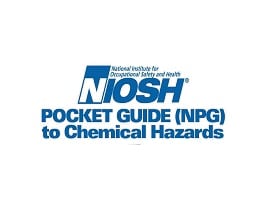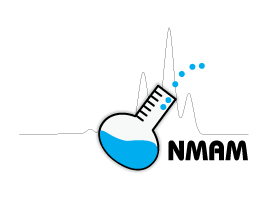Ammonia

Overview
CAS No. 7664-41-7
Ammonia (NH3) is found throughout the environment in the air, soil, and water, and in plants and animals, including humans. Ammonia is also found in many household and industrial cleaners. High levels of ammonia can irritate and burn the skin, mouth, throat, lungs, and eyes. Very high levels of ammonia can damage the lungs or cause death. Workers may be harmed from exposure to ammonia. The level of exposure depends upon dose, duration, and work being done.
Ammonia is used in many industries. Some examples of workers at risk of being exposed to ammonia include the following:
- Agricultural workers who use soil fertilizer
- Industrial workers who manufacture fertilizers, rubber, nitric acid, urea, plastics, fibers, synthetic resin, solvents and other chemicals
- Miners and metallurgic workers
- Workers in petroleum refining
- Workers who use a commercial refrigerant in food processing, produce ice, are near cold storage and de-icing operations.
NIOSH recommends that employers use Hierarchy of Controls to prevent injuries. If you work in an industry that uses ammonia, please read chemical labels and the accompanying Safety Data Sheet for hazard information. Visit NIOSH’s page on Managing Chemical Safety in the Workplace to learn more about controlling chemical workplace exposures.
The following resources provide information about occupational exposure to ammonia. Useful search terms for ammonia include “anhydrous ammonia,” “aqua ammonia,”and “aqueous ammonia.”
NIOSH Chemical Resources
Related NIOSH Resources
- NIOSHTIC-2 search results for ammonia – NIOSHTIC-2 is a searchable database of worker safety and health publications, documents, grant reports, and journal articles supported in whole or in part by NIOSH.
- Immediately Dangerous to LIfe or Health (IDLH) Value of ammonia– NIOSH reviews scientific data and researches methods for developing IDLH values.
- Emergency Response Safety and Health Database (ERSH-DB): Ammonia Solution (UN 3318); Ammonia Anhydrous (UN 1005) – The ERSH-DB provides emergency personnel responding to a terrorist event with accurate and concise information on high-priority chemical, biological and radiological agents that could be encountered.
- NIOSH Certified Equipment List for protections against ammonia
Selected Publications
- NIOSH Criteria Documents: Criteria for a Recommended Standard: Occupational Exposure to Ammonia
- NIOSH Guidelines for Chemical Hazards DHHS Publication No. 74-136 (1974) – Contains a standard for mitigation of exposure to ammonia to prevent adverse effects over a working lifetime.
Related Resources
- Agency for Toxic Substances and Disease Registry (ATSDR) Toxicological Profile for Ammonia
- ATSDR – ToxFAQs™: Ammonia
- Environmental Protection Agency (EPA) Acute Exposure Guideline Levels (AEGLs): Ammonia
- EPA Chemistry Dashboard: Ammonia
- EPA Integrated Risk Information System (IRIS): Ammonia
- National AG Safety Database: Androus Ammonia Safety
- National Library of Medicine (NLM) Hazardous Substance Data Bank: Ammonia
- NLM Haz-Map: Ammonia
- NLM Medline Plus: Ammonia Poisoning
- Occupational Safety and Health Agency (OSHA) Guideline for Ammonia [PDF – 264 KB]
- OSHA Hazard Communication
- OSHA Safety and Health Topics: Ammonia Refrigeration
- OSHA Safety and Health Topics: Anhydrous Ammonia
- New Jersey Hazardous Substance Fact Sheets: Ammonia
International Resources
- European Chemical Agency(ECHA): Ammonia
- eCHEM Global Portal search results for ammonia
- International Labour Organization International Chemical Safety Cards:
- INCHEM Health and Safety Guide No. 37: Ammonia
- INCHEM Environmental Health Criteria 54: Ammonia
- German Social Accident Insurance GESTIS hazardous substances search results



